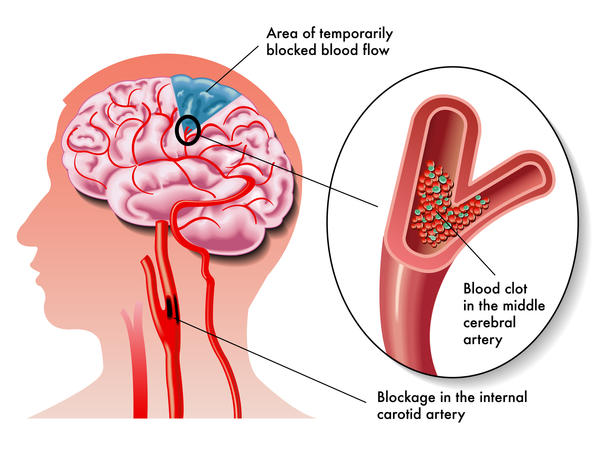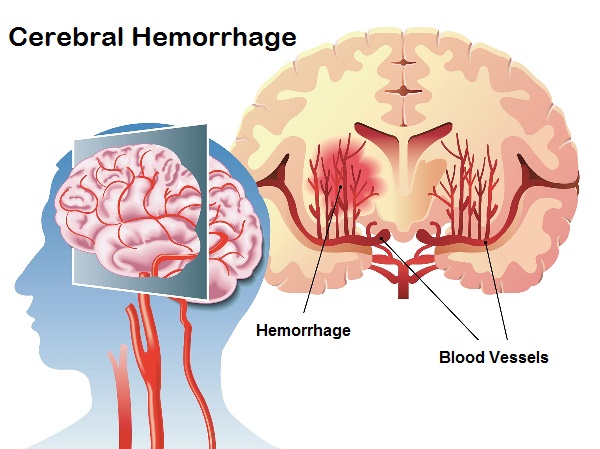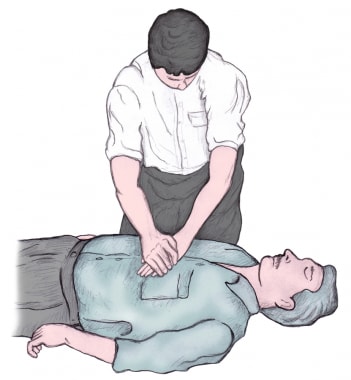Stroke
A stroke or brain attack is a medical emergency that occurs when the blood supply to the brain is disrupted. Strokes are the third most common cause of death in Malaysia and many people live with long-term disability as a result of a stroke. This condition is more common later in life and is more common later in life and is associated with disorders of the circulatory system, such as high blood pressure.
The majority of strokes are caused by a clot in a blood vessel that blocks the flow of blood to part of the brain. However, some strokes are the result of a ruptured blood vessel that causes bleeding into the brain. If a stroke is due to a blood clot, it may brain and improve recovery.
CAUSES OF STROKE
1. Cerebral Thrombosis
- Blockage in arteries supplying oxygenated blood will result in damage to affected parts of the brain

2. Cerebral Haemorrhage
- A weakened area of an artery ruptures. This results in an area of the brain being deprived of oxygenated blood and pooling of blood causing increased pressure on the brain, displacing tissues and interfecting with function. Cerebral haemorrhage is often associated with arteriosclerosis and hypertension.

SYMPTOMS AND SIGNS
- Headache
- Confusion / dizziness
- Loss of function or paralysis of extremities (usually on one side of body)
- Numbness (usually limited to one side of body)
- Collapse
- Facial flaccidness and loss of expression (often to one side of face0
- Impaired speech
- Unequal pupil size
- Impaired version
- Rapid, full pulse
- Difficult breathing, snoring
- Nausea
- Convulsions
- Coma
- Loss of bladder and bowel control
EMERGENCY CARE OF STROKE PATIENT
- Maintain open airway
- Minimize brain damage
- Arrange urgent removal to hospital as soon as possible
WHAT TO DO
- Look the casualty's face. Ask him to smile: if he has had a stroke he may only be able to smile on one side - the other side of his mouth may droop.
- Ask the casualty to raise both his arms: if he has had a stroke, he may only be able to lift one arm.
- Find out whether the person can speak clearly and understand what you say. When you ask a question does he respond appropriately.
- Call 999 for emergency help and tell ambulance control that you have used the FAST guide and you suspect a stroke.
- Keep the casualty comfortable and supported. If the casualty is conscious, you can help him to lie down. Reassure him that help is on its way.
- Regularly monitor and record vital signs - breathing, pulse and level of response while waiting for help to arrive. Do not give the casualty anything to eat or drink because it may be difficult for him to swallow.
FAST (Face-Arm-Speech-Time)
Use the FAST (Face-Arm-Speech-Time) guide if you suspect a casualty had a stroke:
Face weakness : the casualty is unable to smile evenly and the mouth or eye may be droopy
Arm weakness : the casualty is only able to raise one of his arms
Speech problems : the casualty is unable to speak clearly or may not understand the spoken word
MANAGEMENT
Conscious Patient
- Lay casualty downs with head and shoulder slightly raised
- Incline head to one side
- Place towel to absorb any dribbling
- Keep patient calm
- Administer high concentration of oxygen
- Monitor vital signs
- Loosen constricting clothing that might interfere with breathing
- Transport in semi-reclined position
- Give nothing by mouth
- Treat for shock
- Sit in front of patient, keep eye contact and speak slowly and clearly
Unconscious Patient
- Maintain open airway
- Check breathing, pulse and level of responsiveness
- Resuscitate if necessary
- Provide high concentration of oxygen
- Monitor vital signs
- Transport in lateral recovery position
- Keep affected limbs underneath patient, use protective padding


No comments:
Post a Comment